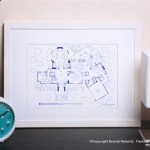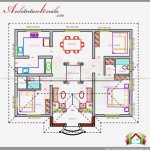A House for Hermit Crab: Preschool Lesson Plans
Preschoolers are naturally curious about the world around them, and exploring the fascinating lives of hermit crabs can spark a love for nature and an understanding of adaptation and survival. This topic offers a unique opportunity to introduce preschoolers to basic scientific concepts and foster their creativity through engaging activities.
The concept of a "house for hermit crab" provides a relatable starting point for young learners. Preschoolers can easily visualize the need for a home and the importance of finding the right fit. This lesson plan explores the world of hermit crabs through interactive activities, sensory experiences, and imaginative play, all while incorporating key learning objectives for preschoolers.
Exploring the World of Hermit Crabs
Begin by introducing hermit crabs to the preschoolers. Engage their visual senses with colorful pictures and videos of hermit crabs in their natural habitat. Discuss their unique features, such as their soft abdomens, their ability to change shells, and their fascinating claws. Encourage questions and discussions about what they observe. This initial exploration sparks curiosity and lays the foundation for deeper learning.
Introduce the idea of a "house for hermit crab" and discuss why it's important. Explain that hermit crabs need a shell to protect their soft bodies from predators. Use simple language and visuals to explain how hermit crabs find shells, how they change shells as they grow, and the challenges they face in finding the perfect fit.
To solidify the concept, play a simple game of "shell-finding" with the children. Provide them with a variety of empty containers: plastic cups, cardboard tubes, small boxes, and even toy shells. Encourage them to find the "perfect" shell for a hermit crab, explaining how different sizes and shapes are needed for different-sized hermit crabs. This hands-on activity helps children understand the need for appropriate housing and fosters critical thinking about the relationship between size and shelter.
Sensory Exploration: Building a Hermit Crab Habitat
Create a sensory experience for the preschoolers by exploring the environment of a hermit crab. Set up a "beach" area in your classroom using a large tub filled with sand, pebbles, and water. Allow the children to explore the textures, feel the coolness of the water, and bury their hands in the sand. You can add small seashells for the children to collect as well.
While exploring the sensory area, introduce the concept of a hermit crab's natural habitat: the beach. Discuss how hermit crabs live on the sand, near water, and sometimes hide under rocks. Explain how they need food and shelter to survive. You can introduce pictures or videos of hermit crabs in their natural environment to further enhance the learning experience.
To engage the creative aspect, provide the children with various materials to build a miniature hermit crab habitat. Encourage them to use their imagination and create their own beach scene. They can use sand, pebbles, shells, plastic plants, and blue paper to represent the ocean. This activity encourages them to think about the environment and the needs of a hermit crab, fostering an understanding of habitat and the importance of protecting nature.
Creative Expression and Role-Playing
Foster creative expression by introducing role-playing and storytelling. Encourage the children to imagine themselves as hermit crabs and create their own stories about finding the perfect shell, exploring the beach, and interacting with other creatures. They can use props like toy hermit crabs, shells, and beach toys to act out their stories and express their creativity.
To further enhance the learning experience, introduce simple songs and rhymes about hermit crabs. These can be playful and educational, reinforcing concepts such as finding a shell, eating food, and living on the beach. You can encourage the children to create their own songs and rhymes, further fostering imaginative thinking and language development.
Finally, conclude the activity with a simple art project. Encourage the children to draw or paint their own hermit crab in its "house." Allow them to use various colors and materials to create a personalized representation of a hermit crab and its shell. This allows them to express their artistic vision and reinforce concepts learned during the activity.

A House For Hermit Crab Activities

A House For Hermit Crab Activities Printables Homeschool Share

A House For Hermit Crab Story Time And Graduation Activities Kidssoup

A House For Hermit Crab Activities The Educators Spin On It

A House For Hermit Crab Activities The Educators Spin On It

A Print And Use Literature Worksheet To Follow Up House For Hermit Crab By Eric Carle Ocean Theme Preschool Activities

A House For Hermit Crab Activities Printables Homeschool Share
A House For Hermit Crab Sequencing Made By Teachers

Stem Projects With Blocks Hermit Crab House

Literacy Worksheet Making Inferences A House For Hermit Crab The Mailbox Kindergarten Writing Ocean Theme Classroom Summer








